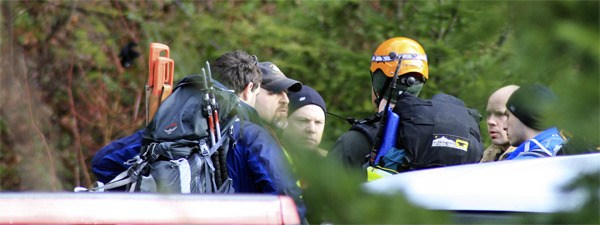The pilot who flew a small plane into Mount Si last year, killing himself and two passengers, was intoxicated, according to a Feb. 4 report from the National Transportation Safety Board.
Robert Hill, 30, was found to have 154 milligrams per deciLiter of alcohol in his bloodstream, nearly four times the legal limit for civil pilots to fly, when he flew a Cessna 172S into Mount Si, around 2 a.m. Feb. 15, 2012.
Federal law prohibits anyone from acting as a crew member on a civil flight with 40 mg/dL alcohol in the blood, the report said, although “Adverse clinical symptoms have been noted with blood ethanol levels as low as 20.0 mg/dL.”
The toxicology tests, routinely conducted on pilots in fatal accidents, also revealed that the pilot had the anti-inflammatory acetaminophen in his urine and of the antihistamine diphenhydramine in his blood and urine.
The report also specified the review of the aircraft equipment and concluded “The on-site examination of the airframe and engine revealed no evidence of a mechanical malfunction or failure with the airframe or engine prior to impact.”
The crash and subsequent NTSB investigation closed trails on Mount Si for nearly two weeks. Searchers located the plane by daylight, and recovered the bodies of the victims the same day, but the investigation and debris removal work took a long time to conclude.
According to the report, Hill and his passengers, Seth Dawson, 31, and Elizabeth Redling, 29, had gone to a local hockey game earlier in the evening and then out to dinner. Around 1:35 a.m., the three departed the Renton Municipal Airport, where Hill worked part time as a flight instructor. The plan climbed to 2,400 feet as it flew northeast, but descended to 1,500 feet near Snoqualmie Falls.
An eyewitness, who was also a private pilot, was driving on I-90 at the time and reported seeing the plane at about 1:50 a.m., flying at 1,000 feet, well below the cloud ceiling. The witness said he lost sight of the plane as the freeway turned south, and when he spotted it again, it was flying northeast, toward Mount Si.
When the plane crashed, it was flying southeast, hitting the mountain just north of the Little Si peak. NTSB investigator Wayne Pollack said the plane seemed to fly a steady course into the mountain, based on the debris field which followed a southeasterly course to the fuselage of the plane. Both wings were torn from the plane, which then crash-landed upside down.
Nearby residents reported seeing the unusually low-flying plane shortly after 1:30 a.m., and reported hearing a pop and then silence around 1:55 a.m.


